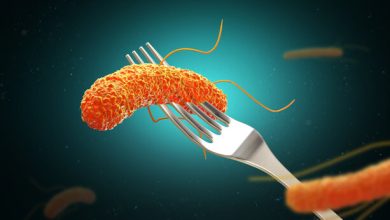The Top 3 Indian Diet Plans

Indian foods are famous for their rich and variant culture of spices, herbs, and flavors. Because of the cultural and regional preferences, plant-based and lacto-vegetarian diets are quite common in India. The staple diet in India includes rice, wheat roti, vegetables, lentils, daals, fruits, and sometimes meat for people who prefer nonvegetarian food. Typically, an Indian meal has a high amount of carbohydrates, and sugar foods like rice, potatoes, and sweets are consumed very often. Namkeens and bhujias with a cup of tea are something all Indians are habitual of.
Bad dietary habits and routine munching are the cause of rising obesity, heart diseases, and diabetes in India. A solid and holistic diet plan with a good lifestyle can keep these problems at a distance. No single food can provide sufficient calories and nutrients the body needs to stay active and healthy. That is why a balanced diet with nutrients such as carbs, proteins and fats along with micronutrients like vitamins and minerals, as recommended.
The best Indian diet is a combination of the five major food groups – cereals and pulses, fruits and vegetables, meat and dairy products, and fats. Spices like turmeric, fenugreek (saunf), ginger, coriander, and cumin are at the forefront of traditional dishes, adding rich flavor and powerful nutritional benefits. Turmeric, one of the most popular spices used in India, is celebrated for its anti-inflammatory, antibacterial and anticancer properties. Knowing how to add the food groups, determine portion sizes, and the best/ideal time to eat is also very important. There are many dietary plans like the 7 days GM diet plan for weight loss; others in trend are keto and intermittent fasting. Let us now discuss some of the ideal Indian diet plans.
The Top Indian Diet Plans-
A lot can be said about what an ideal diet chart should look like. However, nutritional requirements vary from person to person depending upon various factors. They are different depending on gender; for example, male dietary needs are different from females. Factors like geography can also play a significant role, with the diets of north India being essentially different from that of South India. Meal preferences hold a lot of importance since food consumption by a vegetarian or a vegan differs largely from that of a non-vegetarian.
The Top India Diets mainly comprise of the following foods-
- Legumes or daals-Black eyed beans (chawli), Green gram beans (moong daal), red lentils or split red lentils (masoor), etc.
- Vegetables- Spinach, tomatoes, eggplant, potato, onions, cabbage, cauliflower, etc.
- Whole grains- Basmati rice, wheat, brown rice, quinoa, millet, corn, barley, etc
- Fruits- Mango, papaya, pomegranate, apples, oranges, guava, bananas, lychee, plums, melon, pears, etc.
- Nuts and Seeds- Almonds, cashews, peanuts, pistachios, sesame seeds, pumpkin seeds, etc.
- Spices and herbs- Turmeric, ginger, garlic, garam masala, basil, fenugreek, cumin, cardamom, black pepper, etc.
- Dairy- Milk, ghee, cottage cheese, yogurt etc.
- Roots and tubers- Carrots, sweet potatoes, yams, turnips, etc.
Below given are 3 different diet samples that include all of these Indian foods. They are great for weight loss and maintaining a healthy and active lifestyle-
Diet Plan 1-
Early morning (Right after waking up) – one glass of warm water with some brewed herbs. And a handful of oaked almonds
Morning – 1 cup of Coffee/ milk/ginger tea/ lemon tea (150 ml)
Breakfast – Eggs with some cooked spinach and other vegetables
OR Poha/ upma/ Dosa/ Idli- one cup cooked.
Lunch – Fresh vegetable salad with curd or dahi of one cup
Dal Palak/ sambar/ chicken curry/ rasam of one cup
Phulkas/roti ( multigrain ) 1 average size piece with half a cup of rice.
Cooked vegetables or greens of one cup (150 gms).
Evening – 6 pm- Fruits/ sprouts with some carrot or cucumber slices and vegetable soup.
Dinner – 7.30 Pm- A fresh vegetable salad of one cup with dal methi/ rasam or sambar of one cup, multigrain phulkas/ rotis 1-2 pieces. Cooked green vegetables of one cup.
Bedtime – Milk or buttermilk (optional ) of 150 ml.
Diet Plan 2-
Early morning– Cucumber and lemon Detox Water of one glass.
Breakfast– Oats Porridge of Skimmed Milk just one bowl with some mixed nuts.
Before Lunch– Skimmed Milk cottage cheese.
Lunch- Mixed vegetable salad of one bowl, Dal- one bowl, Gajar Matar with 1 Roti or chapati of wholegrain wheat.
Evening– Fruits and buttermilk or lassi (1 glass)
Later evening– Less sugar milk tea of one cup.
Dinner– Mixed veggie salad of one cup with one bowl daal and rice, Cooked vegetables like gourd (lauki) with one chapati/roti.
Diet Plan 3-
Early morning– One glass of warm water with raw black seeds.
Breakfast– Vegetable dalia with a cup of tea/coffee/green tea.
Lunch– Mixed vegetable sabzi with roti/chapati with one bowl of daal.
Evening– Diced fruits with upma/uttapama and buttermilk/green tea/ coffee.
Dinner– Palak paneer with brown rice and any cooked vegetables. Sprout salad of one cup.
Following a good diet routine with drinking lots of water and doing regular exercise can keep one healthy and hearty. People should pick the right food groups according to their health condition. A good dietician should be consulted to understand which food groups and nutrients your body requires. Remember, a balanced diet can help lower the intensity of many diseases and provide people longevity as well.



